Popping a bottle of bubbly has always been a traditional way to celebrate in life, whether it’s to ring in the new year or commemorate an occasion like an engagement. True champagne is defined as sparkling wine that is made in the Champagne region of France, while others originating from different regions are only given the title of sparkling wine. Champagne comes at various prices, with aged or vintage bottlings usually being more expensive. There are still many affordable options nowadays to choose from, even if you’re on a budget. If you’re looking for the best champagne to purchase for your next celebration, we took to top expert reviews to find the consensus favorites.
Navigating the Champagne World
The world of champagne can be both fascinating and daunting, with a vast array of producers, styles, and price points. To navigate this intricate landscape and select the perfect bottle for your needs, consider these key factors:
- Know Your Producer: Each champagne house possesses its unique style and signature blend, resulting in a range of distinct flavors and aromas. Familiarize yourself with renowned producers like Krug, Dom Pérignon, and Veuve Clicquot, known for their consistent quality and exceptional champagnes.
- Consider the Style: Champagne comes in three primary styles: Brut, Blanc de Blancs, and Blanc de Noirs. Brut is the most common style, offering a balance of acidity and fruitiness. Blanc de Blancs is crafted exclusively from Chardonnay grapes, resulting in a delicate and elegant champagne. Blanc de Noirs is produced solely from Pinot Noir grapes, showcasing a rich and structured character.
- Understand Vintage and Non-Vintage: Vintage champagnes are produced from grapes harvested in a single exceptional year, while non-vintage champagnes blend grapes from multiple years to achieve a consistent style. Vintage champagnes are often more expensive and considered special occasion wines, while non-vintage champagnes offer excellent value and versatility.
- Mind the Occasion: Pair your champagne selection with the occasion. For formal gatherings, opt for a prestige cuvée from a renowned producer. For casual celebrations, a non-vintage champagne from a reputable house will suffice. For intimate moments, consider a Blanc de Blancs or Blanc de Noirs.
- Price Points: Champagne prices vary widely, reflecting producer reputation, vintage, and style. Entry-level champagnes can start around $40, while premium cuvées from top producers can reach hundreds or even thousands of dollars.
Tasting Tips
Use your senses to ensure you’re serving high-quality champagne. Here are three simple tips to keep in mind:
- Eyes Wide Open: A pale yellow hue with fine, persistent bubbles is ideal. Cloudy bubbles could indicate age or improper storage.
- Nose Knows: Swirl it gently and sniff! Aromas range from citrus and apple to brioche and toast. Vintage Champagnes often have deeper, nuttier notes.
- Sip & Savor: Take small sips and let the bubbles dance on your tongue. Notice the acidity, fruitiness, and body. Is it light and crisp, or rich and creamy?
Sweetness Spectrum
- Brut: Most common, dry and crisp. Think Granny Smith apples and citrus.
- Extra Dry: A touch sweeter than Brut, with hints of honey or pear.
- Sec: Slightly sweet, good for those who find Brut too dry.
- Demi-Sec: Noticeably sweet, good for dessert pairings.
- Doux: Very sweet, rare and best paired with rich desserts
How To Store Your Champagne
- Cool and Consistent: Aim for 53-57°F (12-14°C) with minimal temperature fluctuations. Avoid heat sources like ovens or radiators.
- Darkness is Golden: Light can damage Champagne. Store bottles in a dark place, like a wine cellar or cabinet.
- Sideways Snooze: Lay bottles on their sides to keep the corks moist and prevent air entering. This is especially important for long-term storage.
- Humidity Matters: Aim for 50-70% humidity to prevent corks from drying out. A wine fridge with humidity control is ideal.
And of course, it’s important to pair your bottles of champagne with the right foods. Many New Year’s celebrations often serve oysters alongside champagne — and for good reason. Research shows that what makes champagne and oysters and so many other food pairings so delicious is the presence of the “umami” flavor, which is usually attributed to meats. However, scientists say that umami exists in both champagne and oysters, making them the perfect pairing.
Ready to find the perfect bottle of bubbly? StudyFinds reviewed 10 liquor experts’ lists to find the best champagne for you to enjoy at your next party or celebration. Our list is comprised of the seven most frequently recommended selections. Let us know your current favorite champagne or which ones on our list you’d like to try in the comments below.
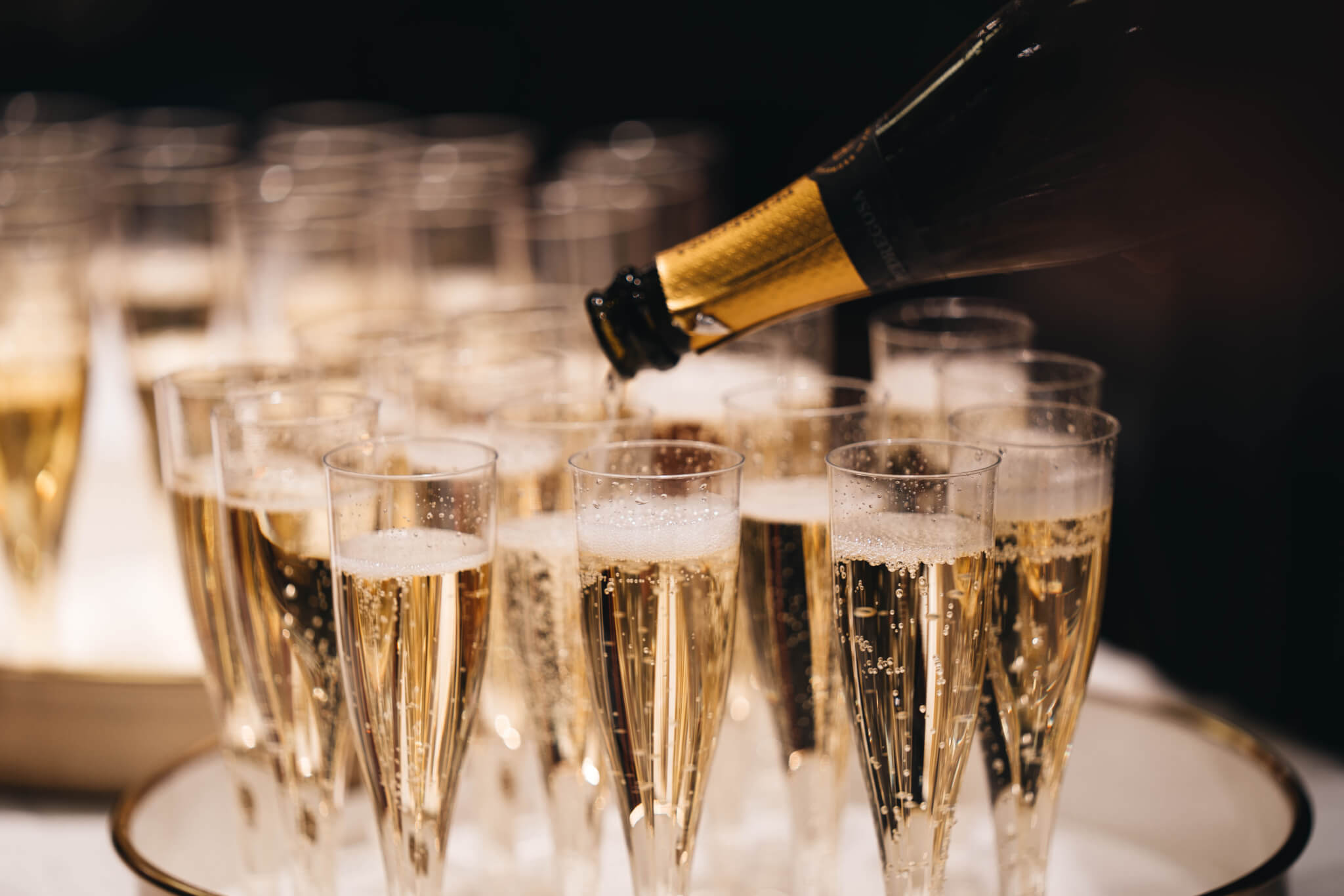
The List: Best Champagne, According to Experts
1. Krug Grande Cuvee
Krug is one of the oldest champagne brands around, with production dating back to 1843. The brand creates prestigious champagnes every year regardless of climate that are often blends created from several different vineyard plots and vintages. “There is an undeniable mystique around Krug, one of the best-known wine labels on the planet, Champagne or otherwise,” writes Eater. “Though the house does offer a range of single-vineyard and single-year vintage wines, it is the non-vintage Grande Cuvee for which it is rightly famous. Make no mistake: This is not an entry-level wine, with prices starting at around $160, or $78 for the half-bottle.”
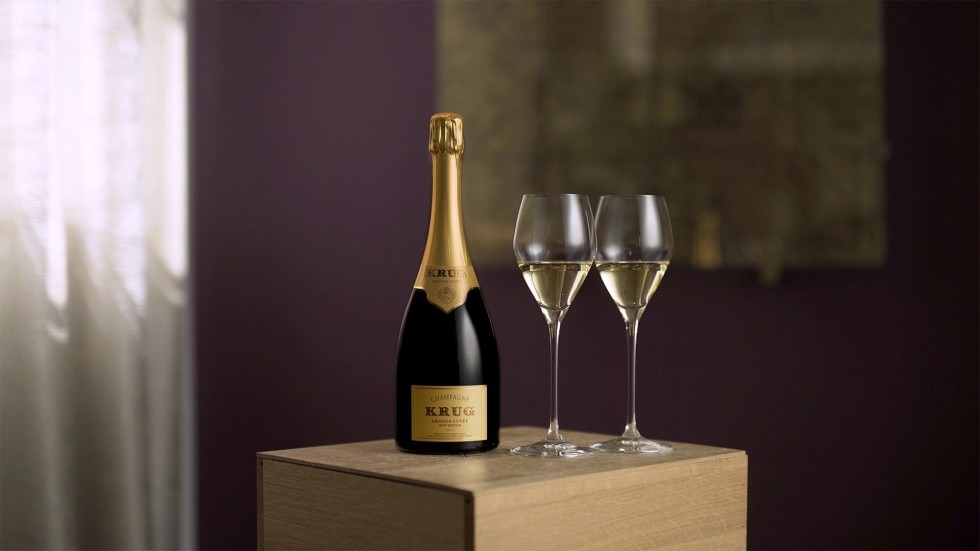
On the back of each bottle of champagne you’ll find a six-digit ID that can be used to find more information about the champagne, and even food or music pairings to accompany your bottle. “Established in Reims in 1843, Krug’s founder, Joseph Krug, had the vision to create a champagne he could offer every year, regardless of how the climate changed,” says Elite Traveler. “It seems he succeeded: Krug is currently the only Maison that creates prestige champagnes every year and has done so since its foundation.”
“The Grande Cuvée captures the pure essence of great Champagne—bright, crisp, vivid, with layers of intricate baking spices, apple pastry, pear tart and distinctly chalky minerality,” explains Liquor. “You’ll also find polish, poise and refinement in each sip, and its ultra-fine beads and creamy texture make it a masterful creation.”
2. Laurent-Perrier La Cuvée Brut
Laurent-Perrier champagne was created by a husband and wife duo. Together the two created what became the third-best champagne in the world. After the husband died, the brand went global and became extremely successful. “One of the most revered Grandes Marques, Laurent-Perrier creates champagnes synonymous with celebrations,” writes Harper’s Bazaar. “The house’s golden non-vintage La Cuvée sits at the toasty end of the spectrum, with a distinct apricot note and fine, light-as-air mousse. We’d recommend stocking up now.”
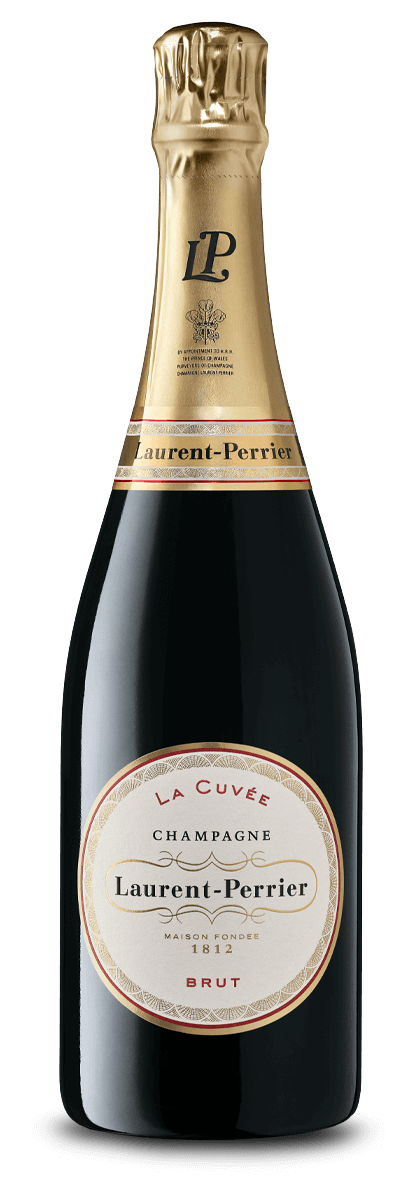
A bottle of this champagne will cost you around $45 to $65, but you’ll get a beautifully balanced champagne that’s perfect for ringing in the New Year. “A Chardonnay-heavy non-vintage blend, this Champagne has a subtle fruit profile and soft, sweet character that lingers on the finish,” explains Vine Pair. “While it’s seen some recent price hikes — as has the majority of the Champagne category, in fairness — it remains widely available and makes for a dependable choice to keep on hand.”
“There’s a beautiful balance of bright lemon citrus and very summery French florals on the nose (think fields of lavender baking in the sun),” says UPROXX. “That citrus leads towards a ripe apricot sweetness and body with a buttery underbelly that’s counter to all that dry fizz and tartness from the citrus. The end is mellow and really embraces the florals, lemon, and apricot.”
3. Ruinart Blanc de Blancs
Ruinart is a “blanc de blancs” wine, meaning it is white wine made from white grapes. This vintage will usually cost you around $300 per bottle. “Ruinart, the oldest established Champagne house, is home to five miles of cavernous, stunningly beautiful chalk cellars (called crayères) beginning 124-feet below ground and dug entirely by hand,” writes Food & Wine. “All told, the cellars reveal more than 20 caves and were classified as a World Heritage site by UNESCO in 2015.”
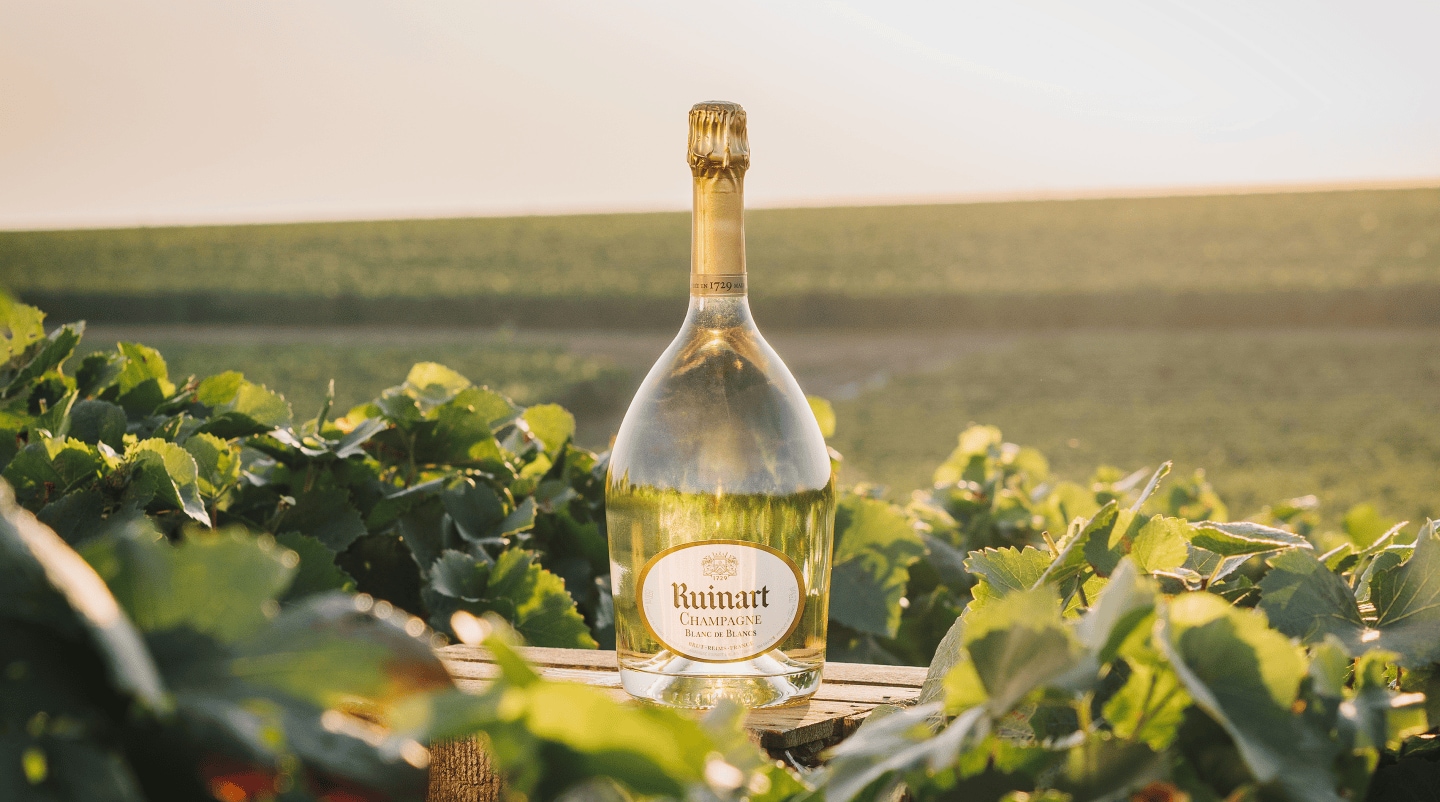
Ruinart is produced from grapes grown on Premier Cru vines from the Cote des Blancs area of the Champagne region. The wine is crisp and bubbly, with notes of ginger spices, apple, lemon, pear, and a smoky finish. “The term ‘blanc de blancs’ designates wines that are only made out of white grapes―in this case, chardonnay,” explains Yahoo. “They are typically cleaner and crisper than other champagnes, but you’ll still get the same depth and touch of creaminess from aging.”
“This alluring vintage Blanc de Blancs is made only from Chardonnay grapes grown in Grand Cru vineyards,” writes Robb Report. “It is pale yellow in the glass with persistent, fine bubbles that tickle the nose and draw you in for aromas of freshly baked brioche, roasted hazelnuts, and lemon meringue filling ensconced in a buttery pie crust. It is voluptuous in the mouth with lively citrus flavors accented by roasted almond notes. Drink now or hold for 10 or more years.”
4. Dom Perignon Vintage
Dom Perignon is a name synonymous with luxury bottles of champagne, with a typical vintage costing around $300 per bottle. “Dom P is Moët & Chandon’s ‘prestige’ line of champagne. So in a sense, this is Moët’s ‘good stuff,’” writes UPROXX. “The bottle was named after legendary monk and champagne cellarmaster Dom Pérignon. The short of it is: Ol’ Dom was instrumental in making champagne into the fizzy wine we love back in the mid-1600s. These days, Moët honors that history with their best stuff.”
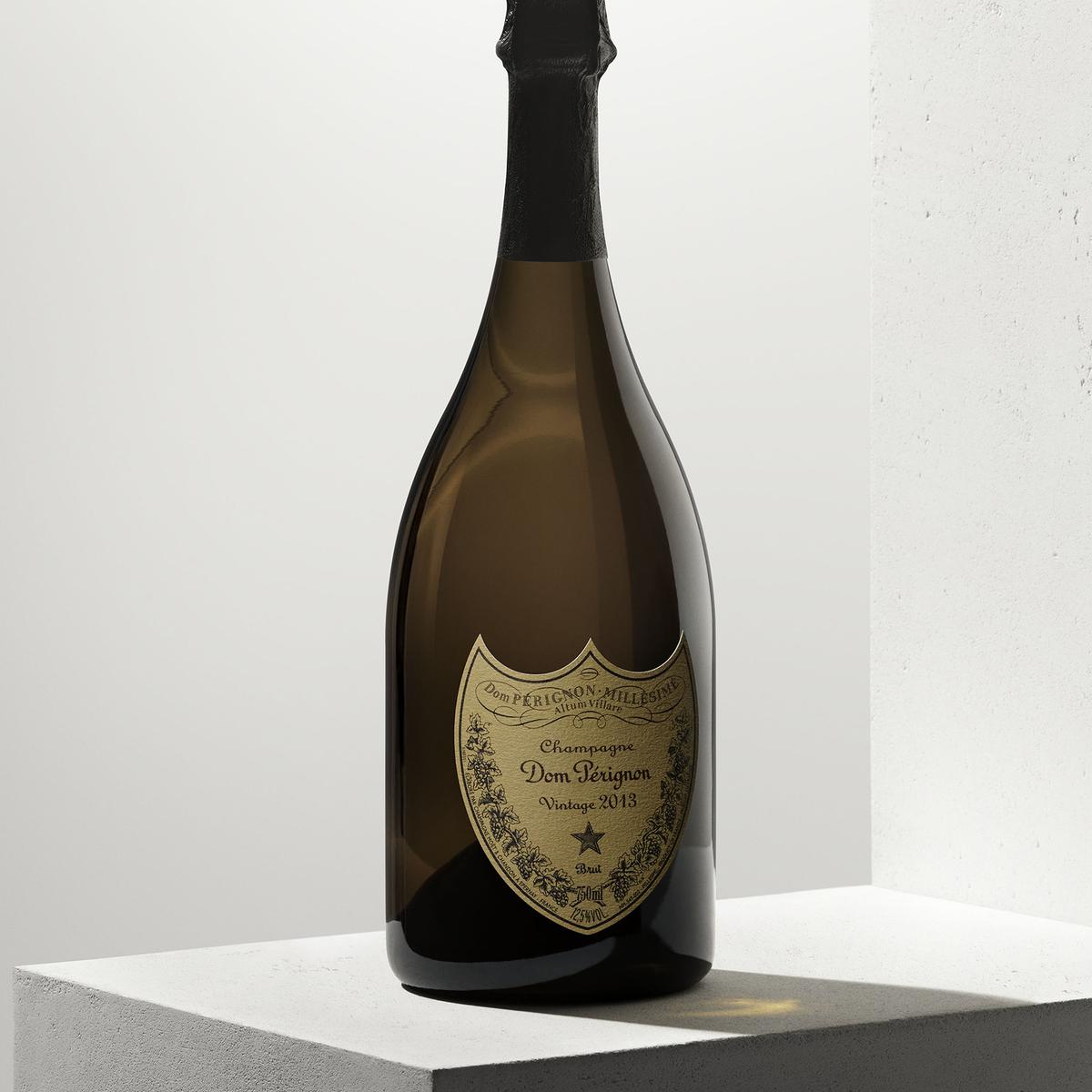
Dom can vary in tasting notes and flavor depending on what year of vintage you get, but tends to be a blend of Pinot and Chardonnay. You can typically pear it with both sweet and savory dishes due to its strong but crisp flavor. “A bold choice, both in style and flavour, Dom Perignon always signals a celebration,” writes Harper’s Bazaar. “Expect a heady hit of sweet, tropical fruit followed by an intriguing smokey undertone. What’s more, there are plenty of fine bubbles in the glass for a long, lingering finish. Thanks to its stronger flavor profile, Dom Perignon can be paired with both sweet and savory dishes. Try it with crème brûlée – you may be surprised.”
“This complex Champagne offers both warmth and freshness,” says Liquor. “Opening up with white flowers, citrus and stone fruit, it’s enhanced by aniseed and crushed mint with aromas of spicy, woody and roasted notes.”
5. Perrier-Jouët Grand Brut Champagne
The origin of Perrier-Jouët can be traced all the way back to 1846. The brand became known for being one of the first brut variety champagnes produced from grapes containing much less sugar than usual bottlings. “Perrier-Jouët impressed our judging panel with its fine, uplifting bubbles and impressively long finish,” writes Esquire. “Flavour-wise, you can expect vibrant citrus and delicate floral aromas, balanced out by buttery brioche and spiced vanilla. We’d pair this NV with smoked salmon or sashimi, though it makes an excellent aperitif, too.”
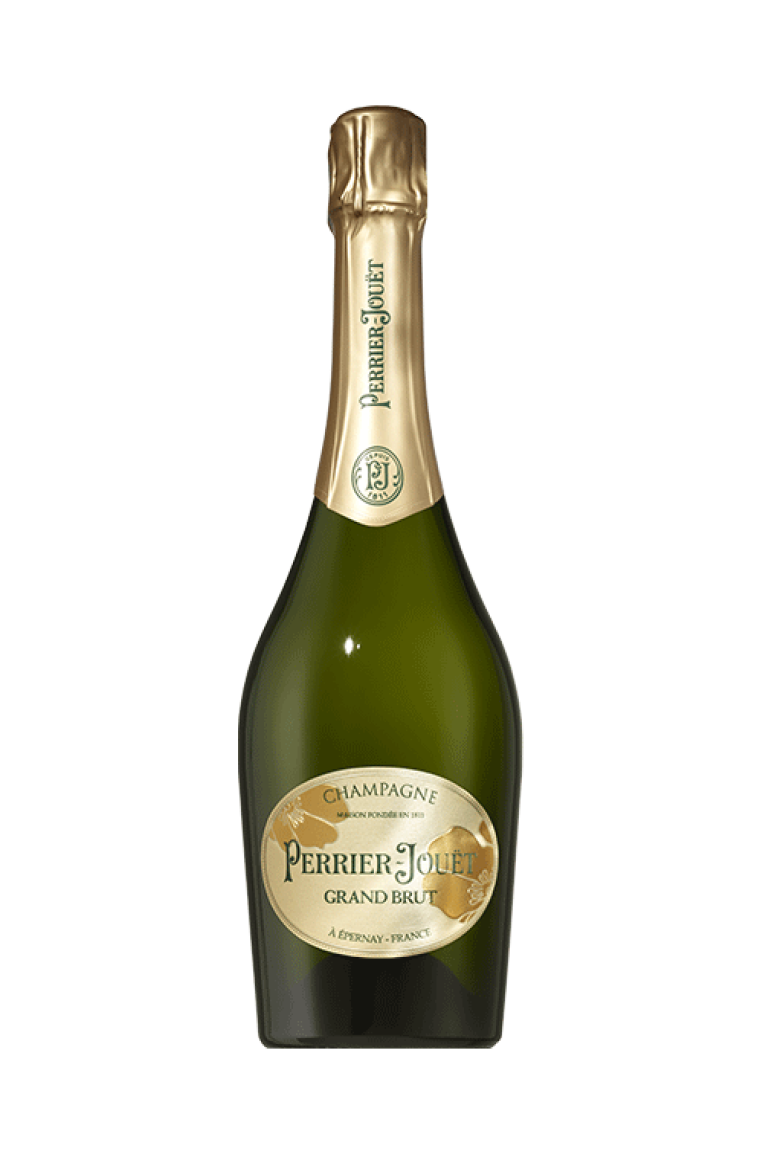
This champagne is crisp and light, with floral and fruity notes that pair well with chicken, grapefruit, or young leeks. “As the delicate blooms on its label suggest, this bottle strikes a delicate nose of white florals that give way to a more vivacious palate marked by lemon, apricot, honey, and butter,” writes Town & Country. “If that sounds like a decadent dessert, then take that as a cue and serve it alongside one—you won’t miss the coffee service at all.”
“Uplifting and lively, Perrier-Jouët is made with parties in mind,” says Harper’s Bazaar. “Expect vibrant citrus and delicate floral aromas, balanced by buttery brioche and spiced vanilla. We recommend serving with light seafood like grilled scallops or sashimi, though this would make an excellent aperitif, too.”
6. Veuve Clicquot Yellow Label Brut
Veuve Clicquot Yellow Label is blended from grapes that originate from as many as 50 or 50 different vineyards and is usually a combination of Pinot Noir, chardonnay, and Meunier. The yellow label is aged for three years minimum. “This wine is made to a precise formula, unvarying from year to year and bottled with the inclusion of Veuve’s vast collection of reserve wines, blended into Yellow Label to ensure consistency,” writes Eater. “Yellow Label gets 10 grams per liter of dosage (which refers to the sugar added into Champagne at bottling to balance acidity and promote longevity), and is composed of grapes from more than 60 parcels across Champagne.”
A bottle of this champagne pairs perfectly with cheese or lighter meals like seafood or pasta and is known for balancing strength and aroma with silkiness. “Veuve Clicquot is an iconic and prestigious Champagne that has garnered worldwide acclaim,” writes Wine with Paige. “Known for its consistent quality, it offers a perfect balance of elegance and depth. With its signature yellow label, this Champagne delights the palate with notes of citrus, brioche, and stone fruits, making it a timeless choice for both celebrations and moments of indulgence.”
“This medium-bodied, brut champagne is known for being consistent and well-balanced,” writes Yahoo. “That’s why you’ll see the telltale yellow label at many celebrations! It is dry and has the flavors of ripe fruit, making it very drinkable no matter the occasion.”
7. Taittinger Brut La Francaise
Taittinger Brut La Francaise comes from the third-oldest production house in the Champagne region, which houses around 600 acres of wine-producing grapes. “The signature Brut Reserve is a must-try,” writes Elite Traveler. “Known for its unusually high proportion of Chardonnay in a non-vintage Champagne, this unique bottle is a crowd-pleaser, delicately balancing subtle flavors of brioche, honey and fresh fruit.”
This particular bottling comes from a blend of about 30 Chardonnay and Pinot Noir vineyards and several harvests. “A mix of chardonnay, pinot noir, and pinot meunier grapes makes this brut bright and fuller-bodied,” writes Yahoo. “It’s consistently at the top of lists of brands to buy. Similar wines cost upwards of 40 percent more, so you’re definitely getting a deal!”
“This Champagne delights the senses with its elegant aromas of white flowers, stone fruits, and brioche, while the palate is treated to a harmonious balance of freshness, creaminess, and delicate flavors, making Taittinger La Francaise Brut Champagne a true testament to the artistry and elegance of champagne,” writes Wine with Paige.
Remember: The most important thing is to have fun and enjoy the experience! So pop a bottle, swirl, sniff, sip, and celebrate the delicious world of champagne. Cheers!
You might also be interested in:
Sources:
- Eater
- Elite Traveler
- Liquor
- Harper’s Bazaar
- Vine Pair
- UPROXX
- Food & Wine
- Yahoo
- Robb Report
- Wine with Paige
- Town & Country
- Esquire
Note: This article was not paid for nor sponsored. StudyFinds is not connected to nor partnered with any of the brands mentioned and receives no compensation for its recommendation. This article contains affiliate marketing links in which a commission is earned if you make a purchase.
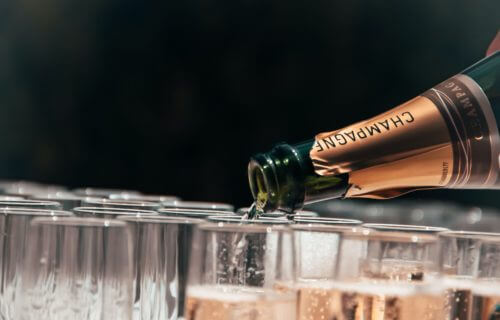
No no no no and no
Great you have listed 5 that most people can afford. You would better serve the readers by listing the top 5 under $75.00
Whole article is fishy. Minimizing price and only one brand thag “affordable,” but no price comparison or commenting on that.
If you’re adding interesting tidbits of information, Madame Clicquot was instrumental in creating champagne in 1810. How could you miss something so important?